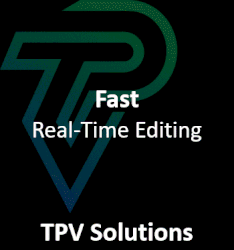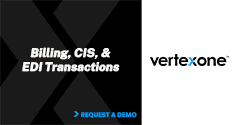|
|
|
|
|
Regulator To Consider Modifications To Utilities' Treatment Of Uncollectibles, Invites Comment On Allocation To Generation, Other Rate Components
The following story is brought free of charge to readers by VertexOne, the exclusive EDI provider of EnergyChoiceMatters.com
In the annual reviews of the rate adjustment mechanisms of Connecticut Light & Power and United Illuminating, the Connecticut PURA stated that it, "will also consider modifications to [each] Company’s cost allocation methodologies and treatment of non-hardship uncollectible expenses."
As noted further below, PURA invited comment on the methodology for allocating non-hardship uncollectible expenses to the Generation Service Charge and to various nonbypassable rates
With respect to CL&P, PURA invited comments by stating as follows: "Provide comments regarding Eversource’s description of its methodology for allocating non-hardship uncollectible expenses to base rates, Generation Service Charge, Electric System Improvements charge, and Non-Bypassable Federally Mandated Congestion Charge, and the relationship among each of the rate components, in the Company’s October 2, 2023 [sic, actually filed 11/15/23] filing in compliance with Order No. 9 from the 2023 RAM Decision, including whether the Party or Intervenor supports the current approach. Also provide recommendations on how to best align the methodologies used by the EDCs under a single methodology that is equitable to all ratepayers. Additionally, the Authority seeks comments on whether the Federal Energy Regulatory Commission allows for non-hardship uncollectible expenses to be recorded within the Transmission Adjustment Clause."
Eversource, in its compliance filing in response to Order No. 9, had stated as follows:
The method to calculate the GSC non-hardship uncollectible expenses was modified by the PURA final
decision in Docket No. 23-01-03 to be based upon the actual amount of net non-hardship customer
account write-offs. This was effective for the reconciliation of 2022 GSC revenues and expenses. Actual
non-hardship net write-offs are allocated to the GSC using an allocation percent calculated based on the
prior quarter percent of GSC billed revenues divided by total retail billed revenues. The other portion of
this allocation is applied to the distribution line of business which is recovered through base distribution
rates.
The non-hardship uncollectible expenses included in the ESI and NBFMCC are not allocated between
rate components. The uncollectible expense included in the ESI RAM component is an incremental
charge associated with capital projects and enhanced tree trimming O&M not recovered through base
rates, and therefore require an incremental uncollectible component included in the total revenue
requirement. Per the settlement agreement in Docket No. 17-10-46, “All capital recovery under this
Settlement Agreement – in both base distribution rates and in the New Capital Tracker – for core capital
projects and system resiliency projects will include pre-tax return on investment, return of investment
(depreciation), property taxes, gross earnings tax, and uncollectible expense” (Docket 17-10-46
Appendix A Settlement Agreement, section 3(a)(iii)(3), page 5). In addition, the Settlement Agreement
states “the amounts for ETT spending for years 2018-2020 shall be eligible for a return as defined in
section 3(a)(iii)(3)”.
This methodology pertains to the uncollectible calculations included in the ESI revenue requirements for
System Resiliency, Enhanced Tree Trimming, 2017 Overestimate of Plant Additions, Capital Spent over
$270 million for Rate Years One through Three, and Core Capital up to $300 million post Rate Year Three
revenue requirement calculations.
The uncollectible expense included the NBFMCC RAM component is an incremental charge associated
with PURA-approved programs in other public policy dockets not recovered through base rates or the
ESI, and therefore require an additional incremental uncollectible component included in the total
revenue requirement. Consistent with the treatment of the capital revenue requirement calculation in
the ESI, the capital revenue requirements calculated in the NBFMCC include an incremental uncollectible
amount.
This methodology (consistent with the ESI) applies to the revenue requirements on capital projects
recovered through the NBFMCC, which includes the DER Portal, DER Map, SCEF, and CT Residential Solar
programs.
Similarly, with respect to UI, PURA invited comments by stating as follows: "Provide comments regarding UI’s description of its methodology for allocating non-hardship uncollectible expenses to the Generation Service Charge, the Transmission Adjustment Clause, and distribution base rates, including whether the Party or Intervenor supports the current approach [with PURA in a footnote citing to 2023 Final Decision, Section III.C.1, pp. 25-26; see also, Docket No. 23-01-03 [sic], Interrogatory Response CAE-47.]. Also provide recommendations on how to best align the methodologies used by EDCs under a single methodology that is equitable to all ratepayers. Additionally, the Authority seeks comments on whether the Federal Energy Regulatory Commission allows for non-hardship uncollectible expenses to be recorded within the Transmission Adjustment Clause."
The 2023 UI Final Decision, Section III.C.1, pp. 25-26 had stated:
The Company [UI] uses standard accounting practices for determining Non-Hardship Uncollectibles. Using its billing system, the Company’s aged Accounts Receivable (A/R) balances are generated in “aging buckets.” Interrog. Resp. CAE-052, p. 2. The Company then segregates some accounts from the aging buckets. For example, accounts with credit balances and disputes are segregated. Id.
Using a twelve-month historical average, the Company then estimates the percentage of each A/R balance aging bucket that will eventually be more than 90 days past due. Id., p. 3. Each value is “then multiplied by the historical uncollectible percentage for Non-Hardship accounts more than 90 days past due.” Id. These numbers are aggregated to provide an estimate of the A/R bad debt reserve. Id.
With the A/R bad debt reserve determined, non-hardship uncollectible (i.e., write-off) expenses can be determined. Seventy-seven days after the Company turns off a customer’s electricity, that customer account’s unpaid balance becomes an uncollectible expense. Hr’g Tr. May 31, 2023, 105:14-19.
UI recovers costs for non-hardship uncollectibles via three rate components: GSC; TAC; and base distribution rates. The Company calculates the GSC portion using total GSC revenues as a percent of total revenues. Tr., 107:8-10. UI allocates the remaining non-hardship uncollectibles balance to the TAC and then to distribution rates. The TAC portion is calculated using transmission revenues as a percentage of total transmission and distribution revenues. Tr., 105:14-19. After allocating to the GSC and the TAC, the Company charges the final remaining balance to distribution rates, if not in excess of the allowable amount. Between March 2020 and June 2022, any portion of the distribution rates balance that was not unallowable is included in the COVID-19 regulatory asset; outside of the period between March 2020 and June 2022, any non-hardship uncollectibles allocated to distribution rates above the allowable amount is not recoverable through rates. Interrog. Resp. CAE-047.
As discussed in Section III.A.3.b, the Company allocated a total of $1.815 million in non-hardship uncollectible expense to the TAC in 2022. OCC-018, Att. 1. Conversely, Eversource does not reflect non-hardship uncollectibles in its TAC. OCC Brief, p. 9. The Authority agrees with OCC that the treatment of non-hardship uncollectibles should be consistent between the two EDCs. Accordingly, the Authority issues Orders herein to gain clarity on UI’s uncollectibles TAC allocation rationale and to work toward greater consistency in such allocation practices between the two EDCs.
The reference to Interrogatory Response CAE-47 is believed to be in reference to UI's docket, Docket No. 23-01-04 (not Docket No. 23-01-03 as stated by PURA). In answering CAE-47, UI had stated:
The Exhibit D, Page 6 non-hardship uncollectibles write-offs unrelated to the GSC write-off amount are recovered as follows:
1. The write-off amount allocated to Transmission is recovered in RAM TAC Exhibit G. Unlike the GSC, the TAC also includes the Transmission allocation of the changes in the Non-Hardship accounts receivable reserve, and that combined amount is included in RAM TAC Exhibit G.
2. The remaining write-off amount is allocated to Distribution and recovered in Distribution base rates.
3. Any Distribution write-off amount in excess of the amount included in Distribution base rates is included in the COVID-19 regulatory asset, to be recovered pursuant to the Authority’s pending decision in Docket No. 22-08-08.
Note that the Exhibit D, Page 6, Line 4 non-hardship uncollectibles write-off amount is after the allocation of non-hardship uncollectibles write-off expense to alternate suppliers, but before the allocation of non-hardship uncollectibles write-offs to GSC and Transmission.
See also OCC-018 UI Attachment 1, OCC-022 Attachment 1, and the responses to CAE-051 and CAE-053.
Dockets 24-01-03, 24-01-04
ADVERTISEMENT ADVERTISEMENT Copyright 2010-23 Energy Choice Matters. If you wish to share this story, please
email or post the website link; unauthorized copying, retransmission, or republication
prohibited.
December 27, 2023
Email This Story
Copyright 2010-23 EnergyChoiceMatters.com
Reporting by Paul Ring • ring@energychoicematters.com

NEW Jobs on RetailEnergyJobs.com:
• NEW! -- Customer Care Specialist I & II- remote/hybrid -- Retail Supplier
• NEW! -- Pricing Analyst - Retail Power
• NEW! -- Electricity Pricing Analyst
-- Retail Supplier
• Business Development Manager -- Retail Supplier
• Call Center Manager -- Retail Supplier
|
|
|
|










